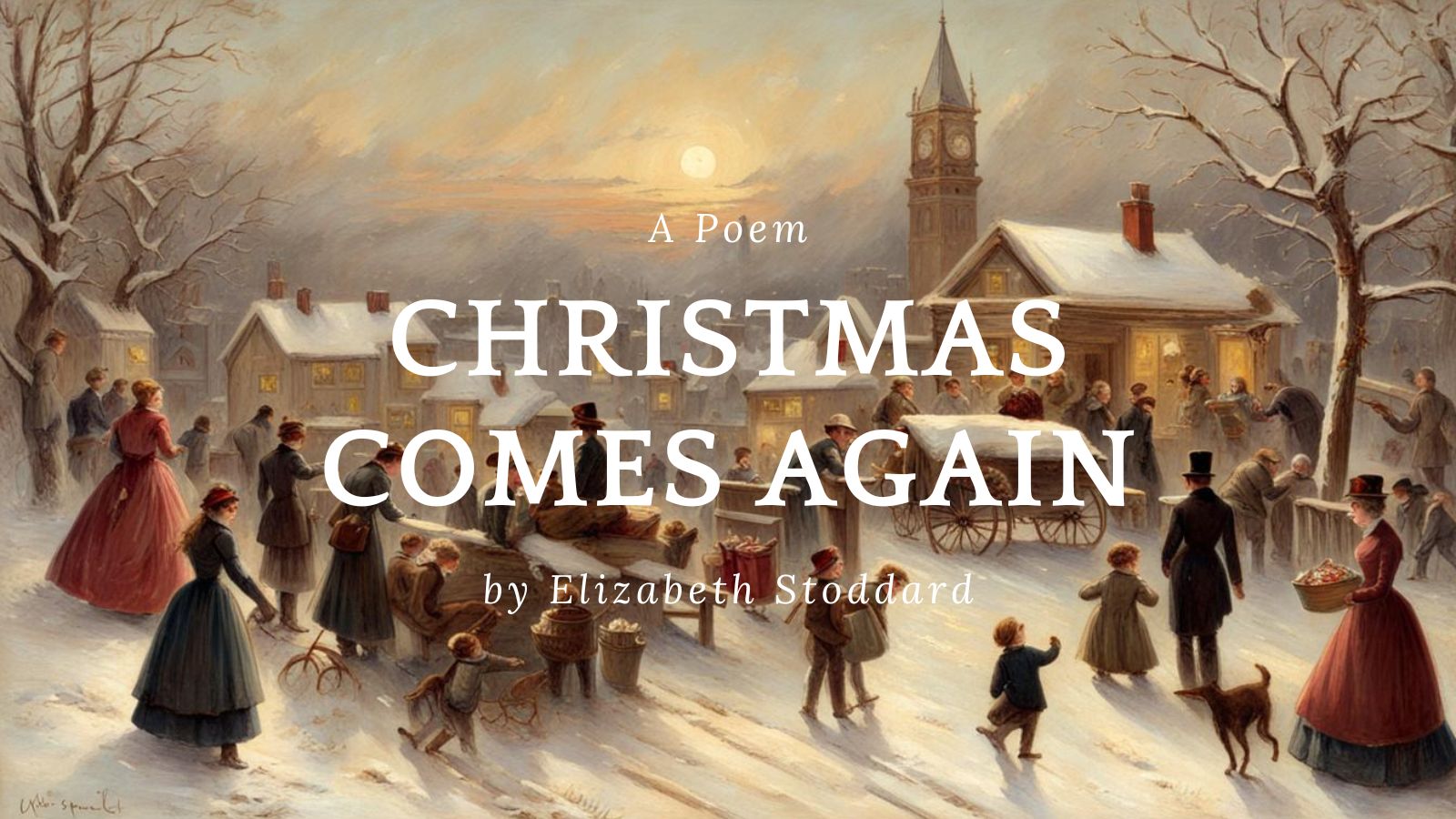Christmas Comes Again by Elizabeth Stoddard

Christmas Comes Again
by Elizabeth Stoddard
Let me be merry now, ‘t is time;
The season is at hand
For Christmas rhyme and Christmas chime,
Close up, and form the band.
The winter fires still burn as bright,
The lamp-light is as clear,
And since the dead are out of sight,
What hinders Christmas cheer?
Why think or speak of that abyss
In which lies all my Past?
High festival I need not miss,
While song and jest shall last.
We’ll clink and drink on Christmas Eve,
Our ghosts can feel no wrong;
They revelled ere they took their leave—
Hearken, my Soldier’s Song:
“The morning air doth coldly pass,
Comrades, to the saddle spring:
The night more bitter cold will bring
Ere dying—ere dying.
Sweetheart, come, the parting glass;
Glass and sabre, clash, clash, clash,
Ere dying—ere dying.
Stirrup-cup and stirrup-kiss—
Do you hope the foe we’ll miss,
Sweetheart, for this loving kiss,
Ere dying—ere dying?”
The feasts and revels of the year
Do ghosts remember long?
Even in memory come they here?
Listen, my Sailor’s Song:
“O my hearties, yo heave ho!
Anchor’s up in Jolly Bay—
Hey!
Pipes and swipes, hob and nob—
Hey!
Mermaid Bess and Dolphin Meg,
Paddle over Jolly Bay—
Hey!
Tars, haul in for Christmas Day,
For round the ‘varsal deep we go;
Never church, never bell,
For to tell
Of Christmas Day.
Yo heave ho, my hearties O!
Haul in, mates, here we lay—
Hey!”
His sword is rusting in its sheath,
His flag furled on the wall;
We’ll twine them with a holly-wreath,
With green leaves cover all.
So clink and drink when falls the eve;
But, comrades, hide from me
Their graves—I would not see them heave
Beside me, like the sea.
Let not my brothers come again,
As men dead in their prime;
Then hold my hands, forget my pain,
And strike the Christmas chime.
###
Elizabeth Drew Stoddard (1823 – 1902) was a poet and novelist who brought fresh perspective to New England life through her Gothic-inspired writings. Born into privilege as a member of Maine’s wealthy Collins family, Stoddard had creative ambitions from a young age. After marrying famed poet Richard Henry Stoddard, she began channeling her skills into both poetry and prose.
Stoddard published her first poem in 1852, quickly earning acclaim for her lyrical verses meditating on love, death, morality and the human condition. Her work appeared in prominent literary magazines for decades, targeting discerning intellectual readers rather than the masses. Stoddard’s distinct poetry was finally compiled into the 1895 collection Poems, featuring favored pieces like “A Presence,” “October,” and “Three Loves.”
In addition to poetry, Stoddard produced three insightful novels between 1862 and 1867. Her debut The Morgesons (1862) painted a stark portrait of a unraveling New England family weakened by societal pressures and inner turmoil. Stoddard expanded her scope with Two Men (1865) and Temple House (1867), probing religion, morality and community identity across Massachusetts, Maine and the isolated Temple House island monastery. More mature editions released in 1888 earned Stoddard’s novels, commended for their psychological depth and regional accuracy, greater readership. Stoddard also tapped into her reservations about strict Puritanical principles through the lighthearted children’s tale Lolly Dinks’s Doings (1874), chronicling the adventures of an irrepressibly free-spirited young girl.